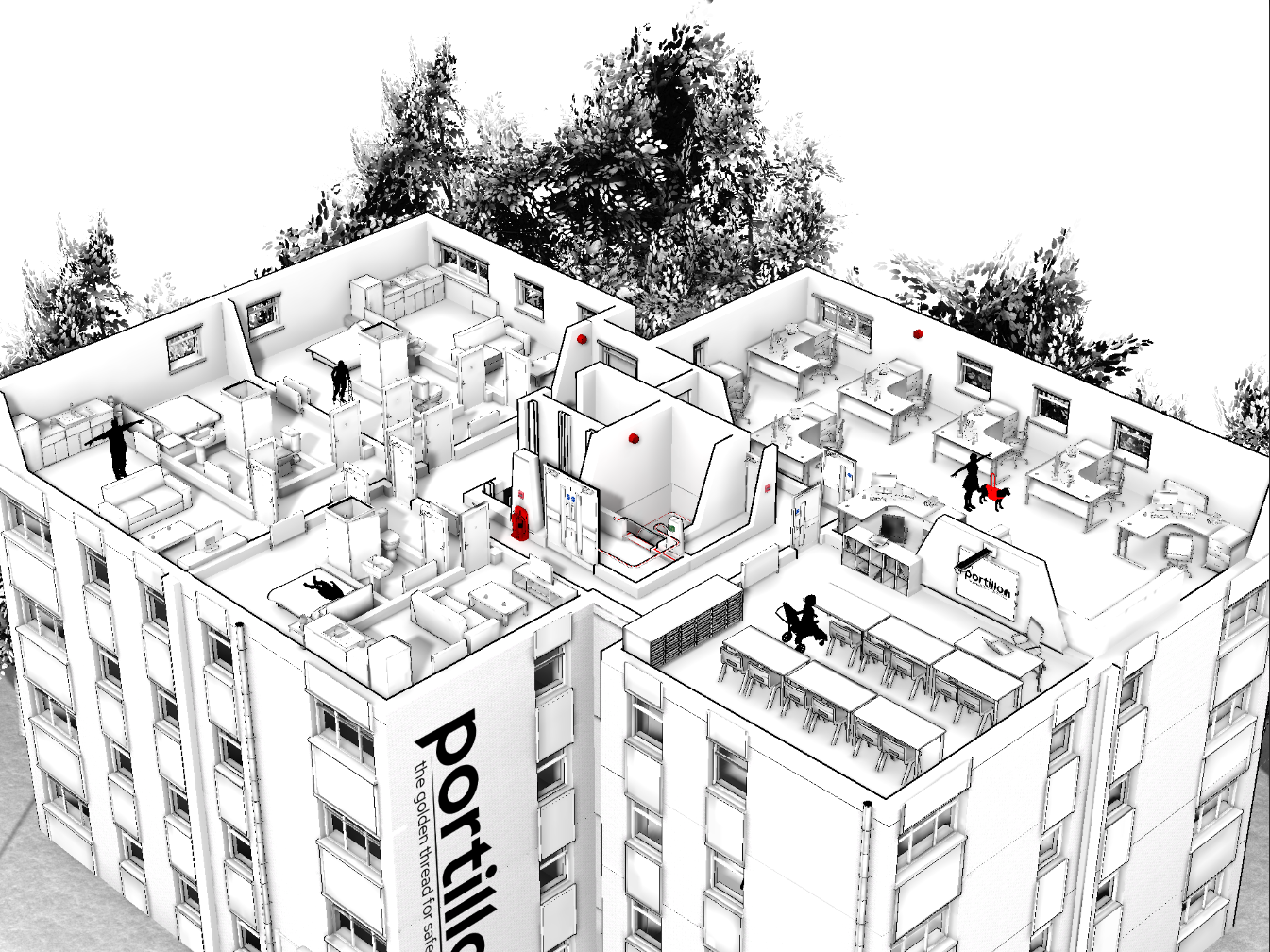Evacuation: a stitch in time saves lives
- May 31, 2022
- 8:10 am


Iain Hoey
Share this content
The fire safety order leaves no caveats for evacuation during an emergency, Triple A sheds light on the legislation
There are an estimated 1 billion disabled people worldwide. The purpose of the UN Convention on the Rights of Persons with Disabilities is to promote, protect and ensure the full and equal enjoyment all human rights and fundamental freedoms by all persons with disabilities, and to promote respects for their inherent dignity. In the UK, there are 14.1 million disabled people whose rights are protected through the Equality Act 2010.
Disabled and Evacuation in an Emergency The use of technology and social care packages has resulted in many disabled people living fulfilled, independent lives within their communities. There is often a common belief that all disabled people are wheelchair users.
Access and egress for disabled people
The Regulatory Reform (Fire Safety) Order 2005, covers almost all buildings in England and Wales. The onus for compliance is on the individual Responsible Person who is the owner, employer or person in control of the building.
The Fire Safety Order specifically states that all relevant people must be able to leave the building as quickly and as safely as possible and processes must be in place for when any relevant person is in immediate danger. There are no caveats excluding either disabled people or residential accommodation from the requirement and non-compliance is a criminal offence.
Building Regulations ensure that multi-storey buildings are accessible to disabled people through the provision of lifts, but the majority of lifts are not fire protected and cannot be used during a fire. This presents a challenge for many Responsible Persons delivering compliance with the Fire Safety Order where it relates to evacuation from residential buildings.
PEEPs and ‘buddies’ in residential buildings
The Fire Safety Order covers the common areas of residential accommodation. English Heritage state that 54% of housing association tenants are disabled and many of these will be residents in multi-storey buildings, which have no fire-protected lifts and no staff.
It is important to recognize that the Fire Safety Order does not require evacuation assistance to be provided by an employee, just that the person is competent and trained. In reality, in the vast majority of cases family members, neighbours or friends are the ‘first responders’ in an emergency and are unlikely to abandon the disabled person to save themselves. There are also considerable advantages in involving them as a buddy:
- they know the disabled person’s capabilities;
- the disabled person trusts them;
- they are aware of any vulnerabilities;
- they will be used to communicating with the disabled person.
Many Responsible Persons are concerned about potential liabilities resulting from training family members, friends or neighbours to assist a disabled person.
PEEPS in the workplace and public access environments
In secure workplaces, the Responsible Person is aware who is present within the building and able to develop a Personal Emergency Evacuation Plan (PEEP) for each individual disabled person.
In public access environments, the Responsible Person is unlikely to know who will be present in the building and therefore will need to develop Generic Emergency Evacuation Plans (GEEPs). It is important that any strategy does not place employees in danger if they are involved in the evacuation of a disabled person as this would breach the Health & Safety Act 1974.
Developing the PEEP
The Fire Safety Order requires that the Responsible Person ensures that employees are provided with training prior to their being required to undertake new activities which includes the development of PEEPs. Triple A Solutions provides Institute of Fire Engineers accredited training to ensure that the Responsible Person can prove due diligence in meeting the requirements of the Fire Safety Order.
The elements that need to be considered during the development of a PEEP are: he physical environment, the disabled person, and the assistance required.
Conclusion
The Tenants Management Agents of Grenfell Tower failed to develop PEEPs for their disabled residents despite being fully aware that they were unable to evacuate. As a result, 41% of the disabled residents of Grenfell Tower died and there were additional fatalities and injuries occurred due to non-disabled residents refusing to attempt to evacuate without the disabled resident.
Those who manage buildings must comply with the requirements of the Fire Safety Order for both disabled and non-disabled people. The alternative is to risk a criminal prosecution if injuries or deaths occur.
This article was originally published in the May edition of IFSJ. To read your FREE digital copy, click here



